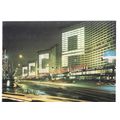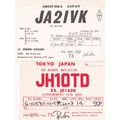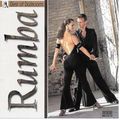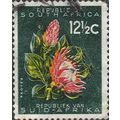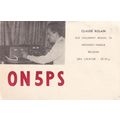Norton, Co. Durham - St. Mary's Church - Kingsley postcard c.1960s
- Condition : Used
- Dispatch : 2 Days
- Brand : None
- ID# : 138006841
- Quantity : 1 item
- Views : 439
- Location : United Kingdom

- Seller : justthebook (+1704)
- Barcode : None
- Start : Mon 30 Mar 2015 00:47:17 (BST)
- Close : Run Until Sold
- Remain : Run Until Sold
More Listings from This Seller view all
Seller's Description
- Postcard
- Picture / Image: St. Mary's Church, Norton, Co. Durham
- Publisher: Kingsley
- Postally used: no
- Stamp: n/a
- Postmark(s): n/a
- Sent to: n/a
- Notes / condition:
Please ask if you need any other information and I will do the best I can to answer.
Image may be low res for illustrative purposes - if you need a higher definition image then please contact me and I may be able to send one. No cards have been trimmed (unless stated).
------------------------------------------------
Postage & Packing:
Postage and packing charge should be showing for your location (contact if not sure).
No additional charges for more than one postcard. You can buy as many postcards from me as you like and you will just pay the fee above once. Please wait for combined invoice. (If buying postcards with other things such as books, please contact or wait for invoice before paying).
Payment Methods:
UK - PayPal, Cheque (from UK bank) or postal order
Outside UK: PayPal ONLY (unless otherwise stated) please. NO non-UK currency checks or money orders (sorry).
NOTE: All postcards are sent in brand new stiffened envelopes which I have bought for the task. These are specially made to protect postcards and you may be able to re-use them. In addition there are other costs to sending so the above charge is not just for the stamp!
I will give a full refund if you are not fully satisfied with the postcard.
----------------------------------------------
Text from the free encyclopedia WIKIPEDIA may appear below to give a little background information (internal links may not work) :
*************
Norton is a village and suburb of Stockton-on-Tees in the unitary authority of Stockton-on-Tees and the ceremonial county of County Durham, England.
Norton stands on rising ground west of Billingham Beck, which flows south-east to join the River Tees. Blakeston is in the north-west of the parish and Hardwick in the west; between them lie Middlefield and Howden. Ouston Moor is in the south-west corner, Newham and Ragworth lie near the south, and Holme House Prison in the south-east.
The original village dates back to at least the Anglo-Saxon period. Once a market town, for centuries Norton was the centre of an important parish that included Stockton, but its status was reversed in 1913 and Norton became a part of the borough of Stockton on Tees.
Today, the village consists of a wide, tree-lined High Street with a number of shops, hairdressers, boutiques and cafés, a library, photographic studio and a traditional fish & chips shop, as well as a mixture of 18th century and 19th century townhouses, cottages and modern apartments. To the south end of High Street, the Victoria Jubilee Memorial Cross stands where the market place was once situated. The red sandstone Anglian style cross commemorates Queen Victoria's Diamond Jubilee in 1897. Further along, and on the opposite side of the High Street are the Fox almshouses, also founded in 1897 at the bequest of local brewer John Henry Fox. At the north end there is a large village green with a duckpond, surrounded by mostly Georgian houses and cottages. The ancient parish church of St. Mary the Virgin stands dominantly on the west side of the village Green. The buildings in the middle of the Green now house a newsagent shop, cafe and community hall where once a blacksmith's forge stood. Away from the village lie the housing estates of Albany, Glebe, Crooksbarn and Norton Grange.
In 1982, the chance discovery of human bones by school children playing on a rope swing near the Mill Lane area of the village, led to the unearthing of an Anglo-Saxon pagan cemetery. Excavations in 1984 revealed 120 burials (117 inhumations and 3 cremations) in graves that contained assorted personal items such as spears, belt buckles and brooches. The remains and objects collected suggest the site was dated to around AD 540–610.
St. Mary the Virgin, the ancient parish church that stands on the village green, is the only cruciform Anglo-Saxon church in Northern England. Its crossing tower with eight triangular head windows has a battlemented top of later date and there is a 14th-century effigy of a knight in chainmail. Residing under the church floor is an escape tunnel used by the Saxons and priests when in danger[citation needed]. The tunnel leads under the church floor and Norton Green, eventually surfacing in the Albany housing estate. The church floor was recently renovated and Saxon remains and artefacts were discovered in the tunnel entrance[citation needed]. The grave of John Walker, the inventor of friction matches, is located in the churchyard.[1]
type=printed
city/ region=norton
period=post-war (1945-present)
postage condition=unposted
number of items=single
size=continental/ modern (150x100 mm)
Listing Information
| Listing Type | Gallery Listing |
| Listing ID# | 138006841 |
| Start Time | Mon 30 Mar 2015 00:47:17 (BST) |
| Close Time | Run Until Sold |
| Starting Bid | Fixed Price (no bidding) |
| Item Condition | Used |
| Bids | 0 |
| Views | 439 |
| Dispatch Time | 2 Days |
| Quantity | 1 |
| Location | United Kingdom |
| Auto Extend | No |



 for 1 item(s)
for 1 item(s)








